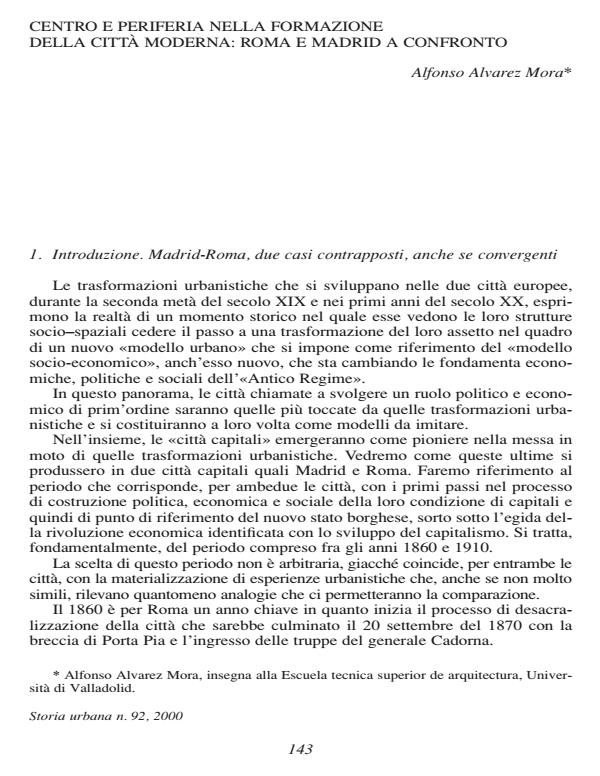Centro e periferia nella formazione della città moderna: Roma e Madrid a confronto
Journal title STORIA URBANA
Author/s Alfonso Alvarez Mora
Publishing Year 1 Issue 2000/92
Language Italian Pages 25 P. File size 688 KB
DOI
DOI is like a bar code for intellectual property: to have more infomation
click here
Below, you can see the article first page
If you want to buy this article in PDF format, you can do it, following the instructions to buy download credits

FrancoAngeli is member of Publishers International Linking Association, Inc (PILA), a not-for-profit association which run the CrossRef service enabling links to and from online scholarly content.
Approximations and differences between Madrid and Rome, at the time they were both growing as modern cities (between the end of the 19th century and the beginning of the 20th), are approached from the point of view of the new «central» areas demanded by the bourgeoise then in power. The making of the modern city as a spatial complex, where the construction of the centre is a benchmark required for understanding the proposed new urban model, is therefore analysed. The elaboration of specific urban plans played a leading role in the building process of both cities. The first plans elaborated for these cities showed remarkable differences as regards their extension proposals as well as the relation between these extensions and the definition of the central areas. That is the difference between the Madrid Extension Plan of 1860 and the Rome Regulatory Plan of 1873. But the elaboration, around 1910, of plans for Rome and Madrid, by Santjust and Nuñez Granés respectively, proposed new alternative spatial organisation that brought the models set for both cities closer together, and with this, the conception of urban
Alfonso Alvarez Mora, Centro e periferia nella formazione della città moderna: Roma e Madrid a confronto in "STORIA URBANA " 92/2000, pp , DOI: